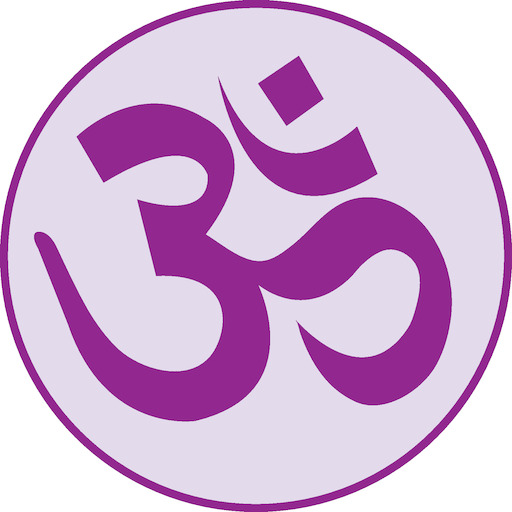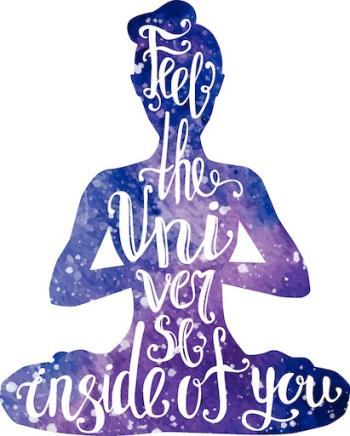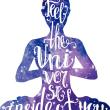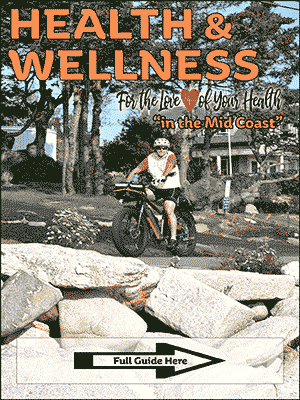Natural healing for mind, body and soul
Siddhartha Gautama, known as the Buddha, was the founder of Buddhism. One of his teachings was this: “Your mind is a powerful thing. When you filter it with positive thoughts your life will start to change.”
Life during a pandemic makes it harder to focus on positive thoughts; every day, every hour we are bombarded with new COVID-19 statistics, worrying about the health of family members – and our own health; political fractures, changes in doing business, business closings, the to mask or not to mask debate, worldwide friction and dissent, the list goes on. And because the outer world is out of our control, it just might be time to discover the peace, strength and calm that meditation has been bringing people for centuries.
In 1,500 B.C., the ancient Vedas of India first wrote about meditation followed by China and Japan. Between 500 and 600 B.C., meditation became a spiritual practice among Buddhists. And the epic poem Bhagavad Gita, believed written around 400 B.C., describes the philosophy of yoga, meditation and spirituality. (project-meditation.org)
There are many forms of meditation, yet in all forms “… the purpose of meditation, in simple terms, is to realize that we’re not the ego. It’s to experience the state of cosmic oneness or consciousness” (meditationsphere.com). The emotional benefits of meditation can include reduction of negative thoughts and emotions, increased self-awareness, stress management, a state of calm and relaxation.
When beginning any form of meditation practice, begin with just 5-10 minutes – set a cooking timer or you can use a pleasant ringtone from your phone. The exception: Guided meditations.
Here is an overview of some of the more popular, best known forms of meditation:
Transcendental Meditation, or TM, was founded by the Maharishi Mahesh Yogi and really took hold in the 1960s and 1970s teaching how to “transcend the surface level of awareness into a state of deep inner awareness ... As the mind settles down through TM it reaches the point where you have no thoughts; a completely settled mind, yet you are awake. Transcendent state goes beyond all mind activity; it goes beyond the faintest level of thought” (www.tm.org). TM practitioners use mantras and breath to center their focus.
Centering Prayer Meditation. This form was developed in Massachusetts at a Catholic monastery where the monks were studying with Zen master Sasaki Roshi and the Maharishi Mahesh Yogi (TM). The monks combined the two into the practice of centering prayer. Yogi Peter Panagore of East Boothbay has been practicing centering prayer meditation daily for almost 40 years. He describes it as a chanting practice of stillness; of learning to quiet the running mind using mental focus – a prayer, a chant, and breath.
“Eventually what happens is the structure of the mind itself stills and the chant falls away and one just observes the breath, until one day the breath just falls away and one just is,” Panagore explained. “The benefits of meditation include lowered heart rate and blood pressure, stress reduction and a feeling of well-being and inner peace. As you go about your daily life, you don’t have to project your anger and anxieties upon others, and your response to another comes from a more peaceful place.”
Guided Meditation. This form of meditation is easily accessible on CDs, YouTube and on meditation apps. There are guided meditations for anxiety, health, sleep, to meet your spirit guides, chakra cleansing and balancing, abundance, removing negative energy, and more. During a guided meditation, you are first led to a relaxed state, releasing all tension from your limbs and mind. Then you are guided to a particular entrance way – a staircase, a series of doors … For example, in the case of the staircase, there are 10 steps. With each step you take, your mind quiets. You are relaxed and breathing evenly. At the bottom of the staircase is a door. When you walk through that door, you can find yourself in a meadow, forest … each meditation is different. Some lead you to a visit with your spirit guides or with a deceased family member with a message for you. It is an exciting journey you will want to record in a journal.
Raja Yoga. This is a form of Hindu yoga/meditation to control the mind and emotions without mantras. It is also practiced with eyes open. For a beginner’s guide: www.brahmakumaris.org/meditation/how-to-meditate. Eventually you will be able to create “a quiet room within yourself … the silent space of the soul.” It a spiritual process to know yourself better and uses the power of the mind to control the body. It awakens the positive qualities buried within you, enabling better performance, and teaches the importance of silence and introspection.
Swami Sarvapriyananda states: “(Raja Yoga) is a question of experience … Actually practicing and experiencing something.”
APPS. Since the arrival of COVID-19 in March, there has been a dramatic increase in the number of people searching for a way to reduce stress and anxiety, and the physical and mental toll caused mediation app downloads. As reported in the blog of San Francisco-based website sensortower.com, in April two million mental wellness apps were downloaded.
Some of the most popular of these include Headspace, Calm, Aura, Sattva and Sattva.Insight Timer, Yoga Glow, buddhify, and Smiling Mind. Some of the apps are free and others offer limited trial periods before a monthly fee is required. Among those cited, those with monthly fees run roughly $4.99-$12.99.
Meditation just may be what we all need to become part of our daily lives. Maybe it’s time we found out why people have been practicing meditation, in one form or another, for the past 5,000 years.
As the Maharishi Mahesh Yogi once said, “We must take situations as they are. We must only change our mental attitudes towards them.”





























